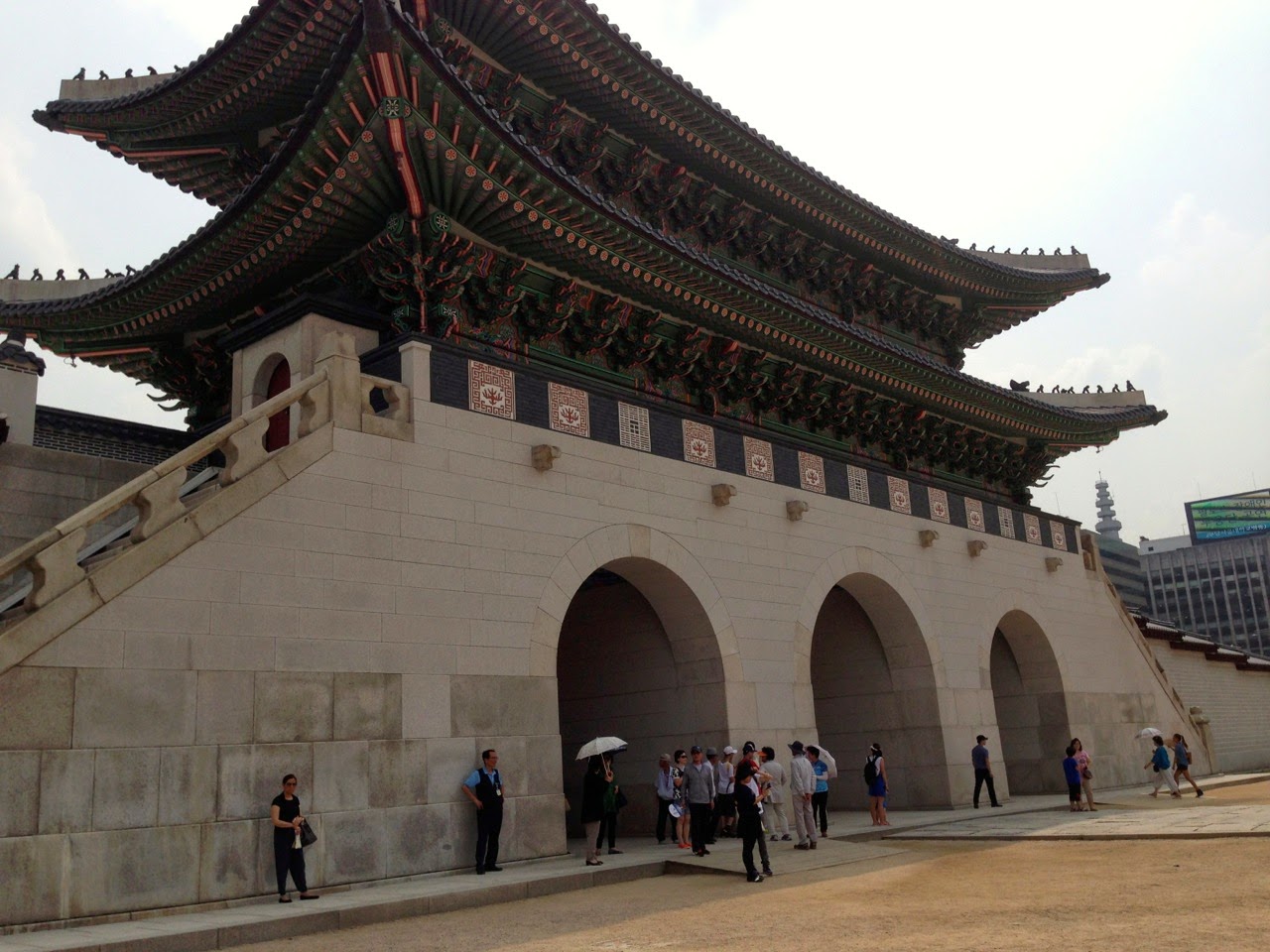Flying a lot encourages you to fly even more. Thank you, frequent flyer miles programs. My airline alliance miles were just about to expire. So to make the most of them, I treated my mom on a trip to a new food destination.
Seoul! A city which I've heard likened to Tokyo with a reputation of vibrant local food. This was going to be a mother-daughter adventure in a new country and city where we had no knowledge of the language.
Seoul reminded us of the parts of the US, in that the roads were spacious, tree-lined, and clean. In the Gangnam area, where the shopping district has been likened to Ginza and Beverly Hills (though I'd argue otherwise because of the quality, and flashiness of the stores), we came across a fun food hall in the Galleria department store. Gourmet 494 is definitely a food destination in Seoul. It is considered to be a luxury food hall filled with eating stations of varying cuisines from Korean, Italian, American, etc. There are also quality sweets, breads, fruits, vegetables, and grocery goods. Of all our food stops, this was definitely the winner.
We also went to the Hyundai department store in Gangnam and the main Lotte department store. While they also had food halls, there weren't as impressive because they were smaller than those in Tokyo and Osaka, and they didn't have products that were extraordinary. Perhaps I was really expecting them to have the scale and originality of products like in Japan, but it didn't quite measure up.
Aside from the department stores, we also strolled down Apgujeong Rodeo Street. This is the area that has been compared to Beverly Hills. So again because of that expectation, I was let down. The shops were not as fashion forward or as boutique as I had expected. It is a nice little street, though, for a quiet walk, and there's also a great bakery in the main corner (the city is filled with coffee shops and bakeries). In terms of the shopping vibrancy on the luxury level, I felt like Seoul has the big brands, but they aren't as vibrantly present compared to Tokyo or Hong Kong.
In researching for the trip, I booked a room in the
Lotte Hotel above the main Lotte department store. According to TripAdvisor it's #1. Despite that ranking, we weren't too happy with the hotel. Yes, the location is good, but the department store is dated and mid-level. It's like Macy's in NYC. A famous destination, but when you shop there you feel the age of the store so it's not as fun as the shopping on Park, Madison, and Fifth avenues. Additionally, with the unpredictable rainy weather, it was hard to walk around outside and during the day it was painfully hot to walk under the sun for so long. The hotel itself is decent, and we stayed on the ladies' floor which is probably cleaner than the rest. But the room and bathroom still felt old, dark, and dated for our standards. Sometimes, renovations aren't enough. I'd rather stay at brand new hotels.
So after one night, we woke up early the next morning to compare our backup hotels: Conrad and JW Marriott in the Dongdaemun area. For our preferences, JW was not our place. It's the newest hotel, but the area is purely for wholesale shopping, particularly textiles. Not our thing. Thankfully, the Conrad was exactly what we were looking for.
The
Conrad Seoul is located about the IFC building in the city's financial district. Our room was incredibly spacious as were were tucked in a corner room with huge floor-to-ceiling windows. Staying in the IFC building allowed us the conveniences of later night dining, a younger crowd, a quality grocery, and indoor access to the subway. Seoul's subway system is so impressive, clean, and spacious. The crowds are educated to be orderly, quiet, and properly dressed. And, every station has well set up entries and exits; it's so convenient for where you want to go. Their subway system is a mixture of Japan's complexity with Hong Kong's of foreign-friendly signs. Not as easy as Hong Kong, but not as overwhelming as Japan.
Aside from department stores and food halls, we also covered some cultural sights and museums. In my next posts, I'll cover the food and museums. For now, here's a little glimpse of our stay.
 |
| Gangnam streets |
 |
| Galleria Department Store |
 |
| Gourmet 464 in Galleria |













